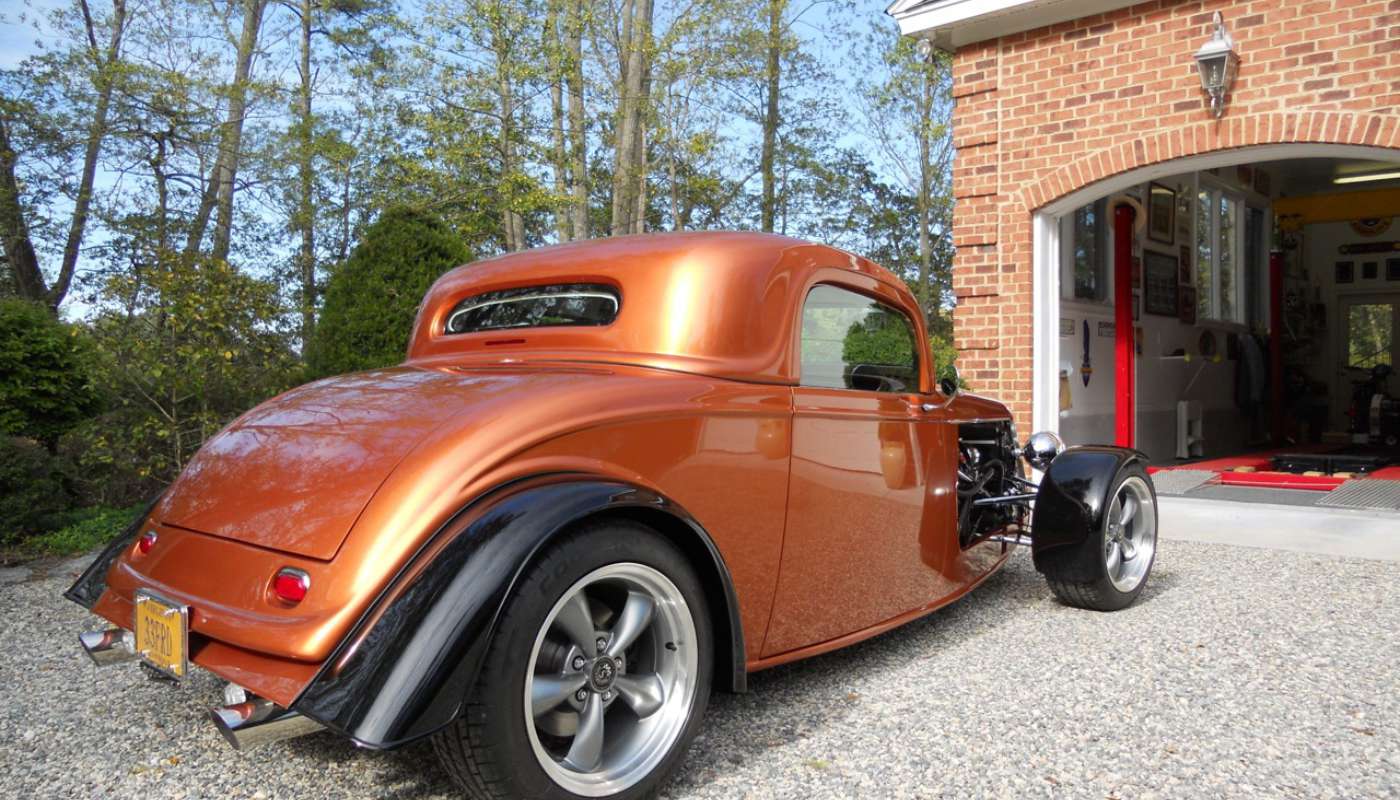
Power and Weight Balanced in a ’33 Hot Rod
As told by Jerome Lester
I started my Factory Five ’33 Hot Rod project in August of 2012, and it’s one of three cars I’ve built in retirement. I keep a record of the time and cost to build each car, and this one took a little over two years and was a bit more expensive, since most of the components are new. The only secondhand part used on the car is the reconditioned 8.8 Ford rear end housing.
When I finished my previous car, I decided that my next project would be Factory Five’s ’33 Ford. I was impressed with the design and the accommodation it offered in the cockpit. Most hot rods constructed on platform-type frames are cramped inside, but the Factory Five space frame allows for a flat floor between the frame members, as opposed to on top of the frame. Additionally, the independent front-cantilevered suspension is completely adjustable both in height and loading, as well as camber, caster and toe-in — a far cry from straight axles found on many hot rods.
I visited the factory soon after the introduction of the ’33 and found the facility to be well organized, and the staff knowledgeable about automobile design, torsional rigidity, load analysis, suspension geometry, and more. Dave Smith is a very enthusiastic owner and personally conducted a tour of the factory and inventory on hand.
When I received my kit, I found it to be quite complete and of high quality. The space frame is well designed and the welding is excellent. I had it powder coated to finish it off, which is an option offered by FFR. The main body of the car is hand laid fiberglass, and is very well done, although like any fiberglass body the fitting and finishing takes time and patience to achieve a show quality product. My biggest criticism was that the assembly manual contained some errors, but the folks at FFR were always available on the phone to help.
While the roadster version is much easier to build, I wanted the all-weather capability offered by the coupe. Power windows, remote power-door latches, air-conditioning and heat all added to the timeline and cost of the finished product, but I ended up with a car that can truly be driven anywhere all year long.
I made several modifications and additions to the body, including engine side-panel vents, a polished grill surround, external fuel filler, third brake light and a back up camera. I also installed the battery in the trunk, as opposed to underneath the car, for serviceability purposes.
I opted for the front cycle-type fenders and full rear fenders but also added a fairing across the rear under the trunk to tie the rear fenders together and give better rain and water control. This modification required reworking of the rear-exit exhaust as well. The front suspension components were also chrome plated.
The interior is simple, but includes a few key upgrades. I went with retractable seat belts, as opposed to the supplied race belts, and a center armrest with cup holders and a glove box increases utility for day-to-day driving. The upholstery is mostly black and as supplied, but I added door pulls, a white rolled-and-pleated headliner and white leather covered roll bar.
Powering the coupe is a new Ford Racing-supplied 306 ci engine, which is an iron block 302 with aluminum heads, dual Edelbrock 500 cfm carburetors and a polished intake manifold. The final product is rated at 345 hp and 325 lb-ft. Gear changes are handled by a TREMEC five-speed (my ideal hot rod has three pedals) and I added an explosion proof 360-degree steel bellhousing, as opposed to a cast unit. With a 3.08:1 final drive ratio, you can comfortably drive in fifth gear at 60 mph turning 1,700 rpm. I opted for 17-inch wheels with 245 x 45R rubber on all-four corners for drivability and rotation capability. The factory uses 18-inch rears. The 8.8-inch rear end was rebuilt with new axles, bearings, seals, disc brakes and a Mustang GT third member.
The finished ’33 drives excellent, and the small-block Ford engine provides a slight rear weight bias. Traction is great, and the handling is Porsche-like in my opinion. While Factory Five’s kit allows for the installation of much larger engines, this configuration provides good acceleration, limited only by your ability to shift gears. Cruising yields about 20 mpg at highway speeds, and it’s comfortable and roomy inside with a trunk big enough for weekend trips. I have put over 6,000 miles on the car since completing it, and I’ve shown it frequently with several first place awards and one best-of-show so far.

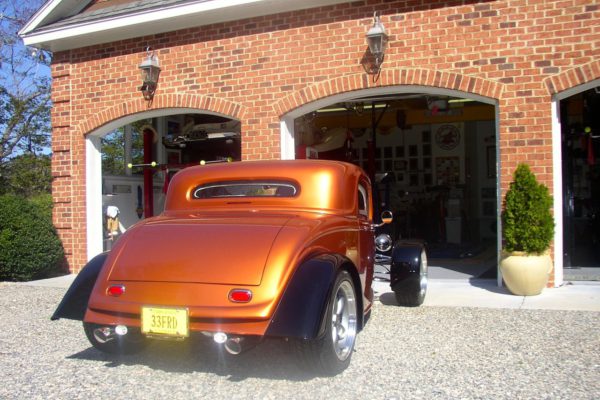
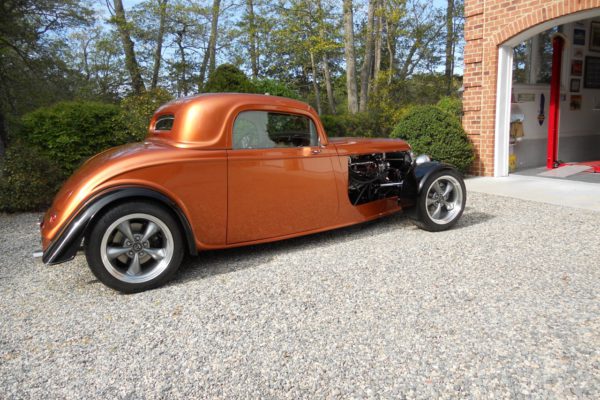
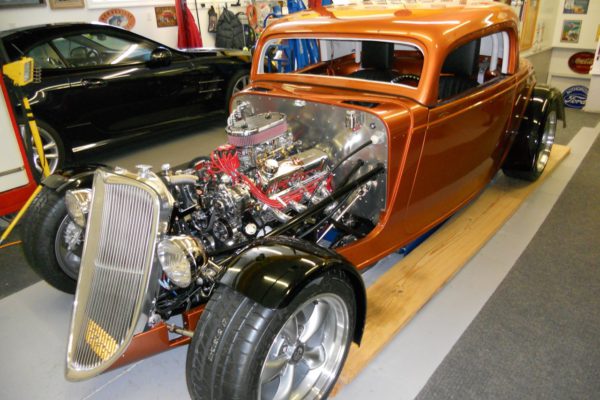
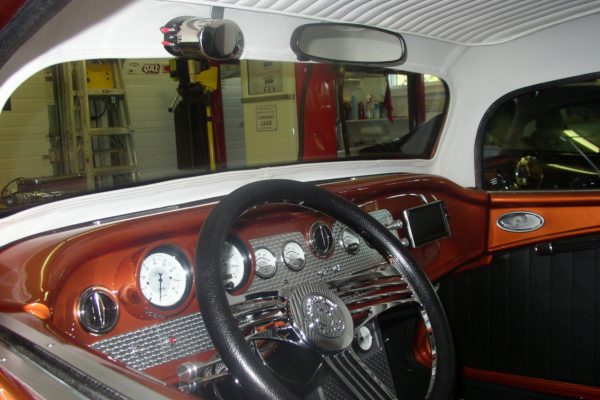
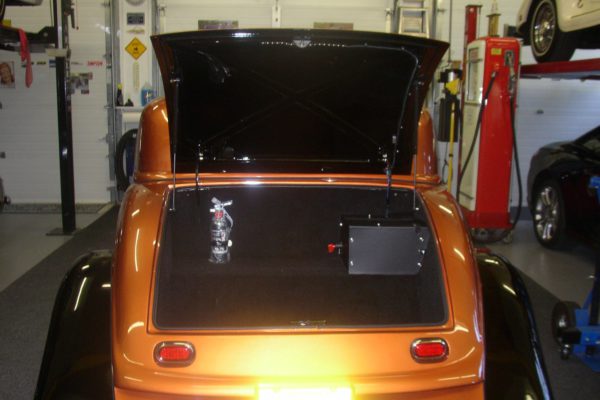
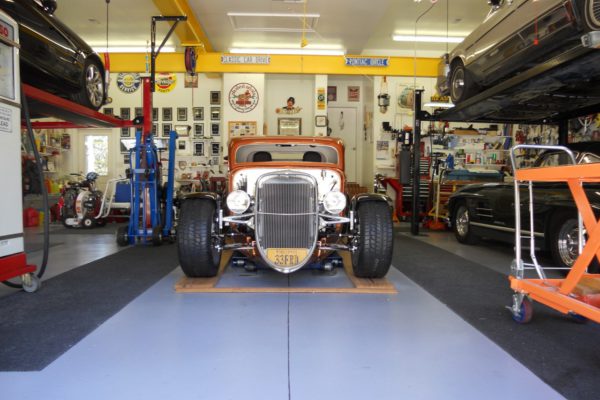
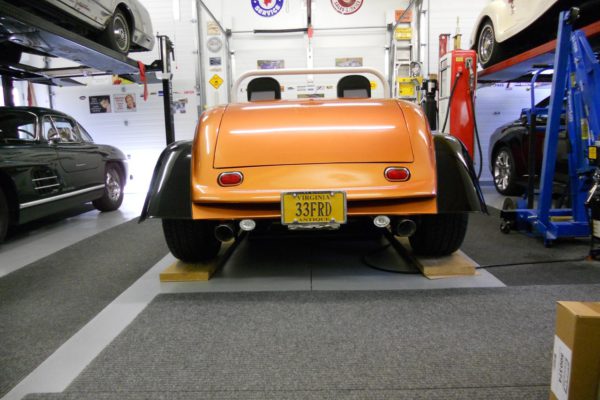

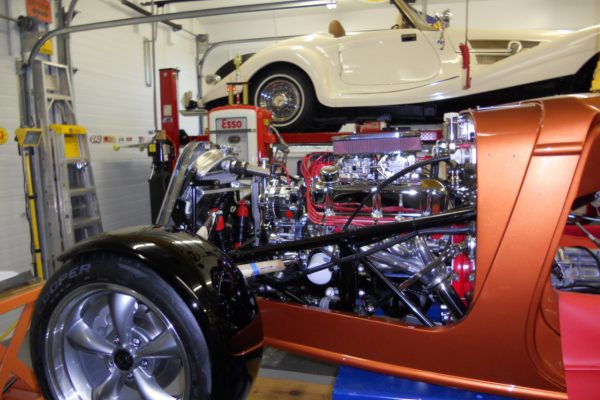
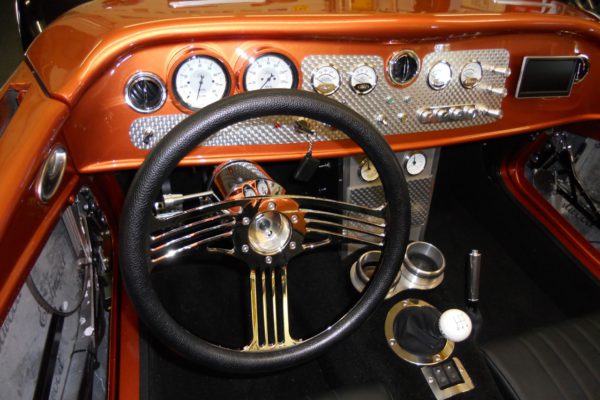
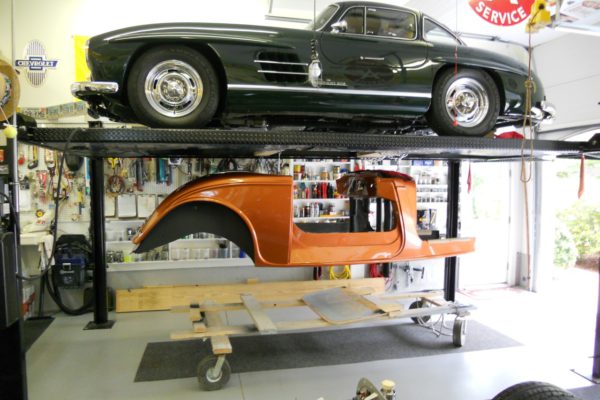
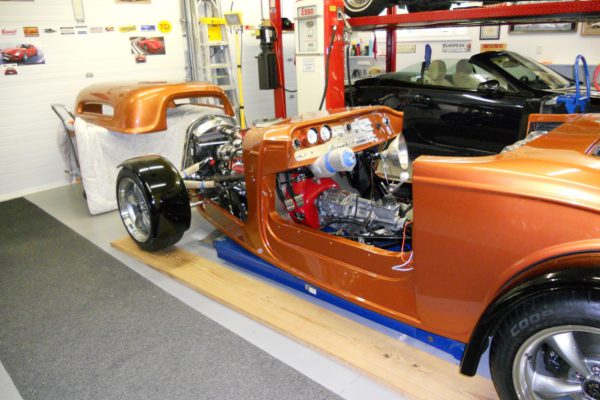
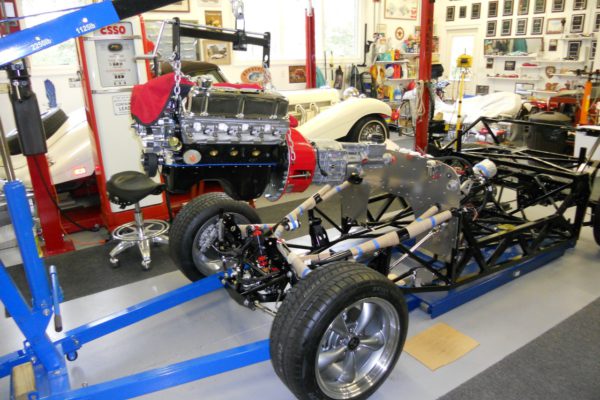
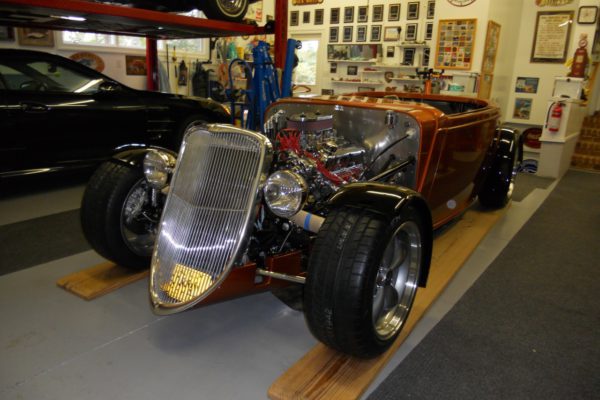
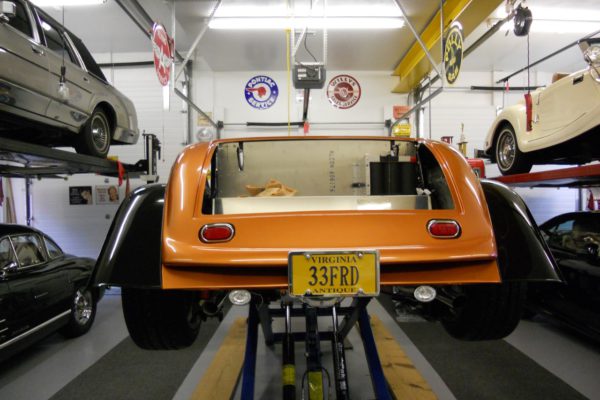
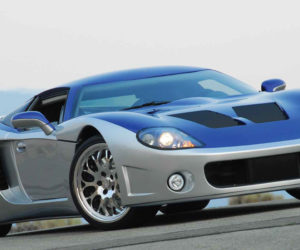
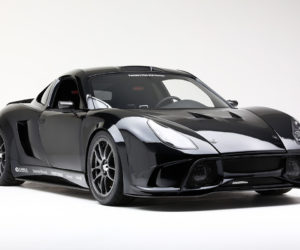
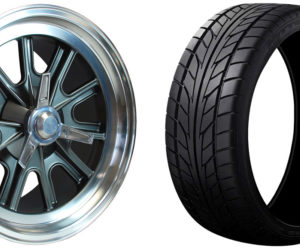
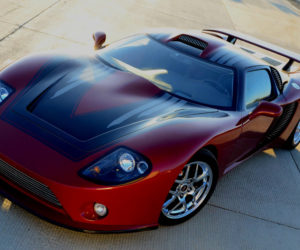
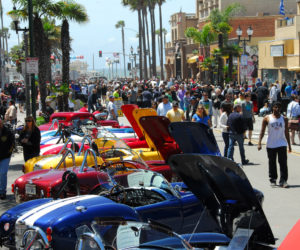
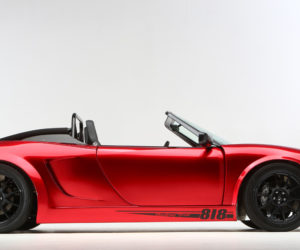




Comments for: Power and Weight Balanced in a ’33 Hot Rod
comments powered by Disqus